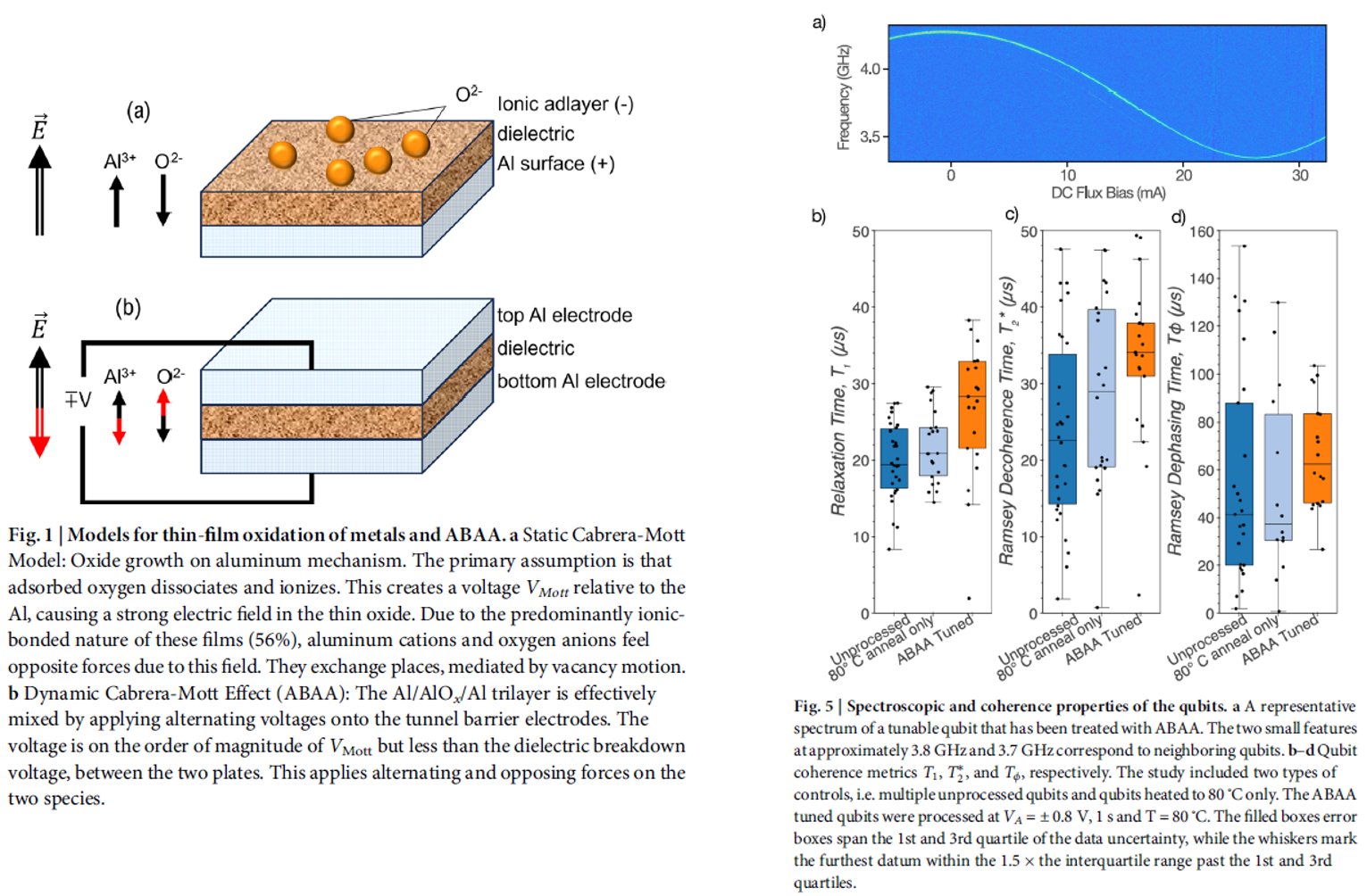Bias annealing of amorphous oxide junctions
2024-08-23 12:11
2767 浏览
Source: Commun Mater 5, 150 (2024) https://doi.org/10.1038/s43246-024-00596-z

Abstract:
Superconducting quantum bits (qubits) rely on ultra-thin, amorphous oxide tunneling barriers that can have significant inhomogeneities and defects as grown. This can result in relatively large uncertainties and deleterious effects in the circuits, limiting the scalability. Finding a robust solution to the junction reproducibility problem has been a long-standing goal in the field. Here, we demonstrate a transformational technique for controllably tuning the electrical properties of aluminum-oxide tunnel junctions. This is accomplished using a low-voltage, alternating-bias applied individually to the tunnel junctions, with which resistance tuning by more than 70% can be achieved. The data indicates an improvement of coherence and reduction of two-level system defects. Transmission electron microscopy shows that the treated junctions are predominantly amorphous, albeit with a more uniform distribution of alumina coordination across the barrier. This technique is expected to be useful for other devices based on ionic amorphous materials.

